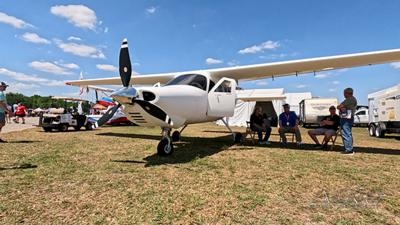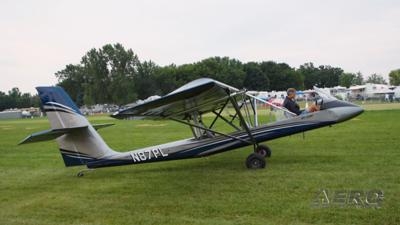Better to Do, Than Wait
In early March 2023, the FAA published guidelines for an optional task-based Phase I flight-testing program, thereby establishing an alternative to the standard 25 or 40-hour flight-testing requirement for amateur-built aircraft and replacing the hours-based testing period with a list of comprehensive and concise tasks.

Upon an applicant aircraft’s completion of the newly-specified tasks, the FAA will approve creation of a unique Aircraft Operating Handbook (AOH*). The applicant aircraft, thereafter, is considered to have completed the Phase I flight-testing period.
The program prescribes a series of 17 discrete flight-test tasks, and recommends the tests be flown per test cards carried in the aircraft. The program further requires the creation of an Aircraft Operating Handbook (AOH)* from the test results. Such a document benefits the builder and any subsequent owners of the vetted aircraft. Test plans—provided they accomplish the FAA-prescribed tasks—may be written by anyone, including kit manufacturers and type clubs. Users of the EAA’s Flight-Test Manual will note similarities in the requirements of the EAA and FAA protocols.
In order to utilize the task-based flight-testing program, an applicant aircraft must have an operating limitation allowing said program’s use. Operating limitations are issued along with airworthiness certificates by the FAA or Designated Airworthiness Representatives (DAR) as part of an aircraft’s airworthiness certification process.
As the traditional time-based Phase I program remains unchanged, aircraft builders are free to utilize such.
On 21 April, the FAA released a formal policy memorandum fully enabling the use of the task-based methodology.
The new operating limitation reads (blank fields to be filled in by the appropriate inspector or DAR:
No person may operate this aircraft for other than the purpose of meeting the requirements of § 91.319(b). The pilot in command must comply with § 91.305 at all times. This aircraft is to be operated under VMC, day only. Unless operating in accordance with the task-based flight test program described in Advisory Circular (AC) 90-89C, Amateur-Built Aircraft and Ultralight Flight Testing Handbook, chapter 2, section 1, during Phase I flight testing, this aircraft must be operated for at least _____ hours with at least_____ takeoffs and landings in this geographical area: [The area must be described by radius, coordinates, navigational aids, and/or landmarks. The size of the area and airports must be that required to safely conduct the anticipated maneuvers and tests.] This aircraft may only operate from [identify name of airport(s)].

By dint of the antecedent memo, all newly inspected amateur-built aircraft should obtain the revised operating limitation. Aircraft builders are advised to query their respective DARs prior to aircraft inspections vis-à-vis subject memo. Builders/owners/operators of amateur-built aircraft already flying and still in phase I are advised to petition their local FSDOs to reissue their respective aircrafts’ operating limitations with the updated language.
The new operating limitation will be incorporated into a future change to FAA Order 8130.2.
*The term AOH is new and makes its initial appearance in the revised (AC) 90-89C, the Amateur-Built Aircraft and Ultralight Flight Testing Handbook. The term was suggested by the EAA as a homebuilt-specific alternative to Pilot Operating Handbook (POH) or Aircraft Flight Manual (AFM), both of which have regulatory connotations not applicable to experimental aircraft.
 ANN's Daily Aero-Term (05.05.25): Circle To Runway (Runway Number)
ANN's Daily Aero-Term (05.05.25): Circle To Runway (Runway Number) ANN's Daily Aero-Linx (05.05.25)
ANN's Daily Aero-Linx (05.05.25) NTSB Prelim: De Havilland DHC-1
NTSB Prelim: De Havilland DHC-1 Classic Aero-TV: The Boeing Dreamliner -- Historic First Flight Coverage
Classic Aero-TV: The Boeing Dreamliner -- Historic First Flight Coverage Airborne-NextGen 05.06.25: AF Uncrewed Fighters, Drones v Planes, Joby Crew Test
Airborne-NextGen 05.06.25: AF Uncrewed Fighters, Drones v Planes, Joby Crew Test




